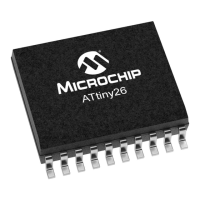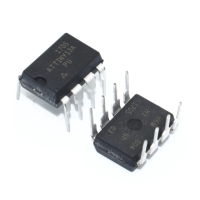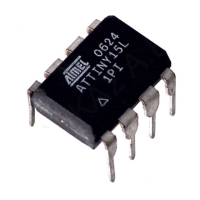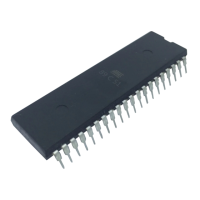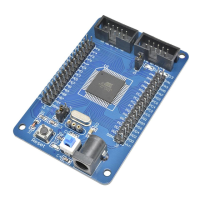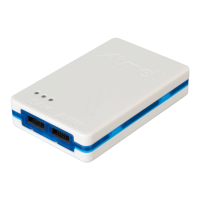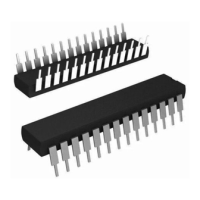133
7598H–AVR–07/09
ATtiny25/45/85
20.4.2 EEPROM Write Prevents Writing to SPMCSR
Note that an EEPROM write operation will block all software programming to Flash. Reading the
Fuses and Lock bits from software will also be prevented during the EEPROM write operation. It
is recommended that the user checks the status bit (EEWE) in the EECR Register and verifies
that the bit is cleared before writing to the SPMCSR Register.
20.4.3 Reading the Fuse and Lock Bits from Software
It is possible to read both the Fuse and Lock bits from software. To read the Lock bits, load the
Z-pointer with 0x0001 and set the RFLB and SPMEN bits in SPMCSR. When an LPM instruction
is executed within three CPU cycles after the RFLB and SPMEN bits are set in SPMCSR, the
value of the Lock bits will be loaded in the destination register. The RFLB and SPMEN bits will
auto-clear upon completion of reading the Lock bits or if no LPM instruction is executed within
three CPU cycles or no SPM instruction is executed within four CPU cycles. When RFLB and
SPMEN are cleared, LPM will work as described in the Instruction set Manual.
The algorithm for reading the Fuse Low byte is similar to the one described above for reading
the Lock bits. To read the Fuse Low byte, load the Z-pointer with 0x0000 and set the RFLB and
SPMEN bits in SPMCSR. When an LPM instruction is executed within three cycles after the
RFLB and SPMEN bits are set in the SPMCSR, the value of the Fuse Low byte (FLB) will be
loaded in the destination register as shown below. Refer to Table 21-5 on page 136 for a
detailed description and mapping of the Fuse Low byte.
Similarly, when reading the Fuse High byte, load 0x0003 in the Z-pointer. When an LPM instruc-
tion is executed within three cycles after the RFLB and SPMEN bits are set in the SPMCSR, the
value of the Fuse High byte (FHB) will be loaded in the destination register as shown below.
Refer to Table 21-4 for detailed description and mapping of the Fuse High byte.
Fuse and Lock bits that are programmed, will be read as zero. Fuse and Lock bits that are
unprogrammed, will be read as one.
20.4.4 Preventing Flash Corruption
During periods of low V
CC
, the Flash program can be corrupted because the supply voltage is
too low for the CPU and the Flash to operate properly. These issues are the same as for board
level systems using the Flash, and the same design solutions should be applied.
A Flash program corruption can be caused by two situations when the voltage is too low. First, a
regular write sequence to the Flash requires a minimum voltage to operate correctly. Secondly,
the CPU itself can execute instructions incorrectly, if the supply voltage for executing instructions
is too low.
Bit 76543210
Rd ––––––LB2LB1
Bit 76543210
Rd FLB7 FLB6 FLB5 FLB4 FLB3 FLB2 FLB1 FLB0
Bit 76543210
Rd FHB7 FHB6 FHB5 FHB4 FHB3 FHB2 FHB1 FHB0
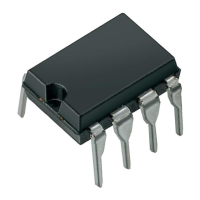
